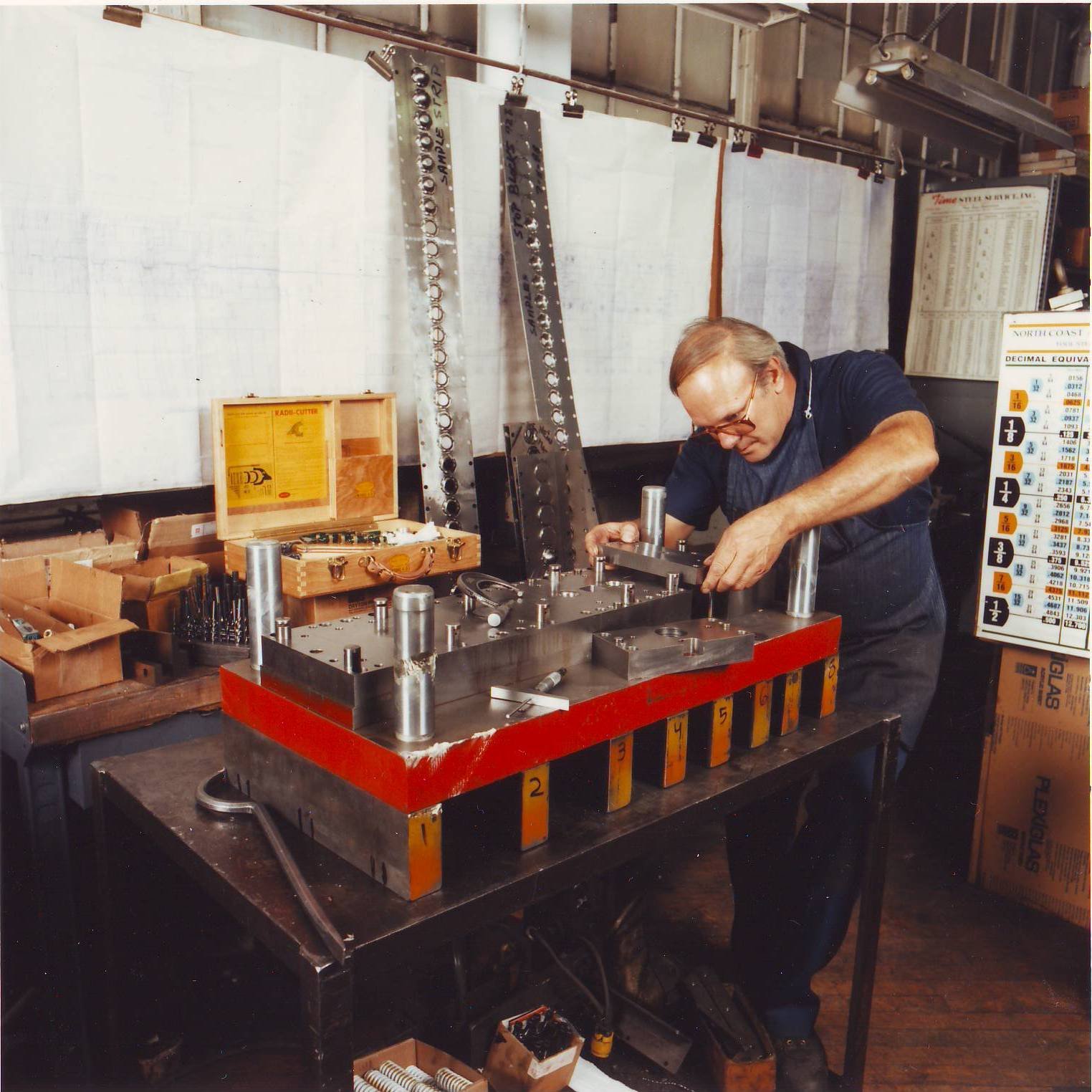How the American Metal Stamping Industry Has Evolved in the Last Century
At Master Products, we’ve been providing quality American metal stamping services for well over a century. Obviously the stamping industry has seen some pretty significant changes in that time. For the most part, quality control and volume requirements have gone way up to keep track with ever-rising consumer demand. Meanwhile, stamping presses and other production technologies have drastically improved to offer more speed, higher consistency, and advanced automation.
What hasn’t changed is our company’s dedication to delivering superior stamped products that meet our customers’ exact requirements.
A Brief History of Metal Stamping Technology
A look into the past: the Master Products metal stamping facility in the early 20th century.
The history of metal stamping dates all the way back to the 7th century B.C. in the region of present-day Turkey. There, a society known as the Lydians used simple metal stamping methods to produce stamped coins.
It wasn’t until 1550 that the metal stamping process was significantly improved by a German silversmith named Marx Schwab. He invented a screw machine to automate the metal stamping process. Essentially, Schwab paved the way for all of the robotic presses and automated metal stamping processes used throughout the industry today.
American Metal Stamping Services in the Early 20th Century
By the time Master Products was founded in 1919, the metal stamping industry had already come a long way. Our company was founded in the new peacetime economy that immediately followed World War I – along with all of the technological advancements that came out of the war and the preceding Industrial Revolution.
Our founders set up shop in a 4,400 sq.-ft shop located in Cleveland, Ohio. With a modest line of manually-operated machines and dedicated craftsmen, Master Products specialized in producing quality washers and other relatively simple custom stampings for an array of newly emerging markets.
The Domestic Metal Stamping Industry of Today
So how do our metal stamping services today compare to what we offered in 1919? For one thing, our presses are much more capable. Having grown in size to 66,000 sq.-ft, our facility is now home to 52 stamping presses with ratings of 15 to 250 tons. A wide range of presses is imperative for today’s metal stamping companies in order to efficiently manufacture a diverse range of products – from high-performance industrial machinery bushings to delicate everyday consumer devices.
Another thing that has significantly evolved is our quality control process. While Master Products has always strived for absolute quality, today’s metal stamping industry has much more stringent standards than it did over a century ago. For example, our ISO 9001:2015 certification assures overall quality and efficient production standards. Some specialized markets have even come to adopt their own unique standards for quality and consistency, such as our IATF 16949:2016 certification for automotive stampings.
Dedicated to High Quality Stamping Solutions Since 1919
Backed by over a century of dedicated service to the American metal stamping industry, Master Products is your single-source contract manufacturer for quality-backed custom metal stamping solutions.




